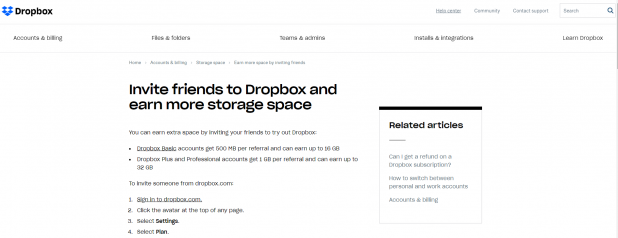Selling software as a service (SaaS) has always required a unique approach. It’s fundamentally different than selling consumer goods like soap or industrial products like steel. Yet, it is different from classic intangible services like banking and insurance. To help new SaaS marketers get up to speed, use our quick guide.
1. You’re marketing a subscription not a one time purchase
Unlike traditional on-premise software, customers pay an ongoing fee to access SaaS products. That means the amount you earn from a customer depends on how long they subscribe. For B2B SaaS products, many companies aim to keep customers for at least 12 months. Why that long as a minimum? It has to do with SaaS business metrics, which we will turn to next.
2. You need to know about SaaS marketing metrics
How much money and effort should you spend on marketing a SaaS product? That’s impossible to answer in the abstract. Instead, your marketing effort needs to take account of a few marketing metrics. While these marketers can calculate these metrics in other industries, they tend to be monitored and tracked most intensively in SaaS.
At a minimum, work at understanding the following SaaS metrics
- ·LTV (Customer Lifetime Value). Also known as CLV, this metric estimates the total value of an average customer to your business. This metric is essential for SaaS marketers because you can spend more on marketing if you have a higher LTV. Over time, look for ways to increase LTV.
- CAC (Customer Acquisition Cost). This metric measures the efficiency of your sales and marketing to acquire customers. There are different ways to define this metric. Some companies use “fully loaded CAC” to include all related costs like advertising, marketing salaries, and sales salaries. Other companies take a simple approach by focusing directly on advertising. As a general rule, your CAC should be lower than LTV. If a customer has an LTV of $100,000, your CAC should be under $100,000. Over time, look for ways to reduce your CAC.
- Payback Period (Payback Period). This metric combines LTV and CAC. ProfitWell defines the payback period as: “Payback period in capital budgeting is the amount of time it takes for your company to recover the cost of acquiring one customer. For example, a customer that costs $350 to acquire and contributes $25/month, or $300/year, has a payback period of 13.9 months.” You can improve the payback period in several ways, such as reducing CAC, increasing LTV, or reducing churn.
- Gross Churn Rate. Some customers will cancel their subscription. Most companies measure churn rates on an annual basis. This SaaS metric is most useful to read over time. If your churn rate was 10% last year and then 20%, your business has a problem!
As a SaaS marketer, you may be asked to discuss each of these metrics. It is best to keep all of these in mind as you plan your marketing budget.
3. Your marketing objective may not be “buy right now”
In conventional marketing, there are usually two objectives. In brand marketing, you are aiming to raise awareness for your product. Most of Coke and Pepsi’s marketing fall in this banner.
Second, you have direct response marketing (our favorite kind). With direct response, you send a marketing message, and you get an answer right away. That response might be an e-commerce purchase on a Shopify store, for example.
With SaaS marketing, your marketing objective usually varies depending on the price point and complexity of your software. As a general guideline, there are a few different objectives.
Direct Sign-Up.
For some SaaS products, especially for those priced at $100 per month or less, your objective may be to go for the sale immediately. Some SaaS companies make the direct sign-up goal easier by offering a free version of their product with limited functionality (or offer a free trial).
Free Trial or Software Demo.
With more complex software, you may not be able to go for the sale right away. After all, your product may require a few weeks of training or configuration before it can be used – think of accounting software as an example. In that case, your marketing goal is to get people to sign up for a free trial or make an appointment with sales.
Email Lead
With this marketing objective, you are engaging people who are interested but not enough to make a purchase. In this case, your SaaS marketing objective is to get a lead to join your email list. Once they are subscribed, you can follow up to share helpful information and make offers to use your product.
Social Media Follower
In some cases, your objective might be to get a lead to subscribe to your page or channel on social media. Since the social media platform controls access, this objective is less valuable than the other objectives.
4. SaaS Marketing: You can learn from customer success and engagement
In some industries, there is limited contact with the customer after purchase. Sure, there might be the occasional customer service request, but that’s about it. SaaS is different. Your customer could be using your platform daily. That means you get daily usage data about your platform.
That’s important for SaaS marketers because it makes it easy to create data-driven marketing and case studies. For example, a customer relationship management (CRM) application might find that 90% of users do not place outbound calls from inside the app. The small number who do use this feature may be prospecting stars who close many more deals. From a marketing standpoint, you can publish a case study based on this specific usage data.
Gong.io, a sales intelligence SaaS product, has used this strategy successfully to create content. Reach out to your developers, product managers, and others who have this data. It’s up to you to leverage this unique SaaS marketing advantage. For example, did you know that the use of curse words on sales words is correlated with better sales results? Gong reported: “According to our research, sales professionals swear on 20% of their calls with buyers. Even more shocking? It’s helping them close deals.” If you can track behavior in your SaaS product, create content based on the activities of your most successful users.
5. SaaS Marketing is different because the product changes rapidly
When your product changes, marketing needs to adjust. SaaS products are famous for quickly delivering new feature updates. Take CanIRank as an example. In a recent blog post, the company announced new capabilities like an e-commerce solution that tracks more than 250,000 websites and a free SEO audit. Both of these capabilities suggest new marketing opportunities like creating content for the e-commerce niche and attracting more SEO professionals who want audit tools.
Integrations with other products dramatically increase your opportunities.
For example, instead of merely announcing integration with another product, host a joint webinar with the other company. It’s a great way to solidify your relationship and show the value of what you’ve achieved.
In SaaS marketing, you might see the value of integrations, but your technical team might be focused on other priorities. In that case, you need a shortcut solution to develop integrations. We recommend using Zapier. This SaaS product makes it easy to automate processes, pass data, and connect different applications. As of March 2020, Zapier integrations serve more than 2,000 SaaS applications.
6. In SaaS marketing, you sometimes sell software licenses and professional services together
Buying a sophisticated enterprise software package like an accounting system for a Fortune 100 company is high risk. There are a lot of moving parts and stakeholders to manage. The SEC, IRS, and other authorities will not tolerate late or inaccurate financial information. Marketing this kind of SaaS product requires that you know how to sell software and professional services.
Professional services are often needed when a customer buys a SaaS product for a few reasons.
First, the buyer may need technical assistance to install and configure the product effectively. Second, the customer’s employee may need training support to use the product. By selling these services, you make it much more likely that the customer will gain value from the product.
Not convinced you need to market professional services? It is usually only required in B2B SaaS products. Some software companies make a considerable portion of their revenue through such arrangements. In 2019, Salesforce.com made $869 million by selling professional services out of total revenue of $13.3 billion, according to the 2019 annual report. We’re willing to bet that buyers of software and services tended to have higher LTV than software buyers alone because they will have more confidence in using the software.
7. SaaS marketers need to become technically fluent
As a SaaS marketer, it is your job to understand people. That starts with understanding your customers and why they buy your software (hint: it’s rarely an entirely rational process). Next, you need to understand your developers and their challenges. Why does that matter? You want to avoid creating marketing around unstable features for one. Further, technical features sometimes make for great marketing content.
To put this tip into action, make an appointment to meet with the product and development teams regularly. In particular, listen to examples about features working well, speed improvements, quality improvements, and similar changes. Likewise, SaaS marketers should meet with the sales team to find out which features excite customers the most during demos.
Resource: There’s a growing number of marketers with a hunger to learn programming and related skills. As a starting point, check out Ryan Kulp’s outstanding essay: TITLE.
8. You can build marketing potential directly into the product
In SaaS marketing, your product can market itself! This is more than a simple word of mouth referrals. You can add referral bonuses, notifications, and other messaging right into the product or your website. To illustrate this approach to SaaS marketing, take a look at these examples.
Drip: See and Use The Product On Other Websites
As a marketing SaaS product, you can see Drip in action right on their website. Likewise, Drip will be visible directly on other websites that use the service. End users, especially if they are SaaS marketers, have taken notice, and we’ve seen Drift explode in popularity.

Dropbox: Reward Users For Referring New Users
Though it is an older example, Dropbox has demonstrated that giving your product away can encourage growth. Specifically, Dropbox rewarded existing customers with more storage space when they referred other users to the product.

In addition, some SaaS products benefit from the social network. They become more useful and valuable as more people use them. Social networks like LinkedIn and Facebook are classic examples, but those are not the only examples. Slack, the messaging service, markets itself to a degree because it is a communication tool.
The Final Word On SaaS Marketing: The Fundamentals Still Matter
You’ve seen quite a few ways where SaaS marketing is different from other industries. However, fundamental marketing knowledge and skills are still incredibly important. You need to understand your customer’s needs and problems. You need to know your way around different media channels and how to craft compelling copy. For the best results, combine these fundamental marketing skills with the SaaS specific marketing knowledge.




